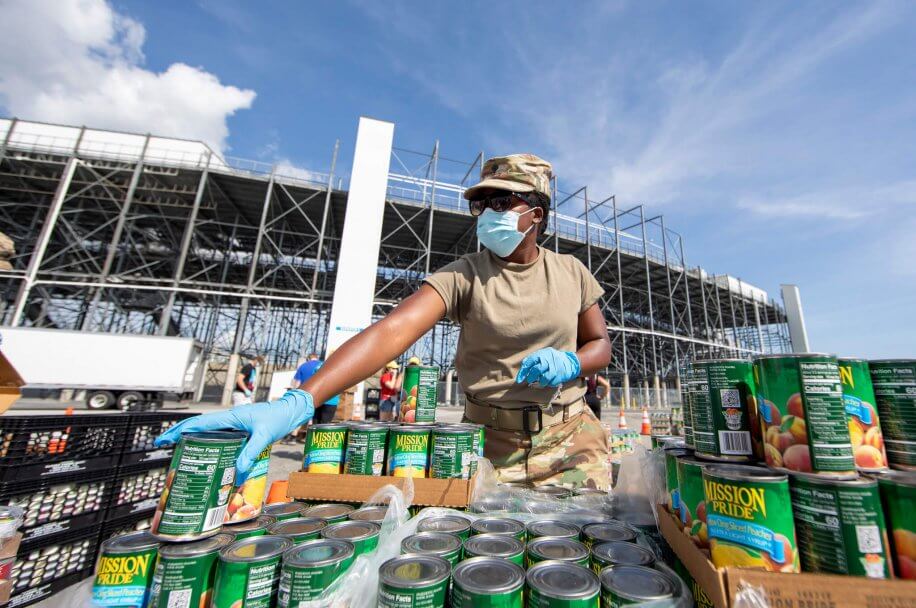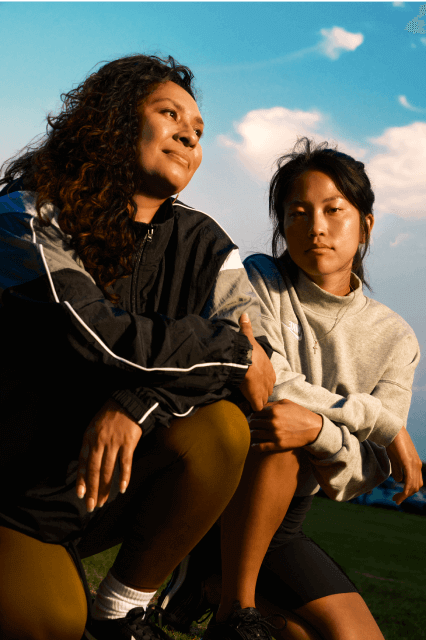Brand Leadership Through Challenge and Change

Visa, BBMG and CECP share best practices for brand purpose and storytelling in times of crisis
In moments of profound challenge and change, a brand’s response shouldn’t begin with the story they want to tell, says Visa’s Stacey Zolt Hara. It must begin with the actions the company is willing to take to be part of the solution and manifest the change the world needs.
Expectations for brands to act with integrity and lead us to a better future have never been higher, or more important. As the world faces a confluence of crises – from a global health pandemic to simultaneous reckonings on racial justice, economic equity and climate change – people’s trust in our institutions and corporations can be shaken to the core.
In the context of multiple structural and societal crises, Visa’s leadership team took a step back and asked, “Where do we uniquely have the capability to partner and help?”
To meet this moment for authentic leadership and impact, Chief Executives for Corporate Purpose (CECP) brought together its coalition of corporate leaders and allies for their annual CECP Summit to discuss how brands can shape culture and drive positive change. Stacey Zolt Hara, Head of Global Reputation Management and Public Affairs at Visa joined BBMG’s founding partner, Raphael Bemporad, and CECP’s Director of External Affairs, Jackie Albano, for a virtual session to talk about the role of purpose and storytelling for brand building, particularly in times of crisis.
Here are some of the highlights from our session, Brand Building Through Storytelling.
Starting with Empathy, Vulnerability and Creativity
“If we think about the next generation – what they’re experiencing and what they expect – we’re at a moment of much greater need and higher expectations for the role of business in society and the relationship with brands in their lives,” said Raphael, citing BBMG’s recent study The Gen Z Reckoning. As expectations are shifting, Raphael underscored that this is a moment for brand leaders to exhibit fierce empathy, vulnerability, and creativity for what can happen next.
“Storytelling is not about the perfect, packaged, poll-tested message. It’s actually about the lived experience of the moment we’re in,” he said, inviting brands to listen with humility and be open to ideas and relationships inside and outside their organization to better understand deeply-felt needs and possible solutions. “Hearing diverse voices, experiences and perspectives will make us much more thoughtful and impactful than if we tried to do it alone,” he added. “It’s about being present, being empathetic, being real, and welcoming people to be part of the story and the solution you’re creating in real time.”
Empathetic listening to the human needs of all stakeholders is top of mind for Stacey and Visa as they continue to navigate brand leadership through crises. “Your business touches humans,” said Stacey. “Look for the ways you’re really impacting people’s lives… so that you’re really bringing to life the way in which [your brand] matters.”
Flipping the Pyramid to Focus on Impact
“My personal mission is to use brands as a force for transformation in society. Brands as a vehicle for change,” said Raphael. He explained how having a clear sense of purpose and a framework to identify what human needs your brand can address now can really help supercharge and focus brand storytelling.
“When you’re thinking about massive, global crises, it’s easy to want to throw in the kitchen sink,” said Stacey, “but the key to storytelling is having clear themes you reinforce all the time.” For the present crisis, Visa went back to their core themes of women’s financial empowerment, innovation, security and societal engagement through the reach of their global network. “That’s where we focused. That’s where Visa is uniquely able to serve.”
“Our mandate had new relevancy and urgency under coronavirus,” said Stacey, referring to Visa’s mission to help individuals, communities and economies thrive. Having a north star brand purpose to guide decision making and storytelling has allowed them to move quickly to actions like donating to first response efforts via Feeding America, Doctors Without Borders, UNICEF and others; partnering with governments to get economic stimulus payments to unbanked Americans through prepaid cards; building a new intranet to help employees cope with what’s happening; and funding grants to help small businesses – particularly those most in service of urgent needs under the pandemic – to get back to business in a healthy way that helps community resilience.
Rather than focusing first on brand reputation and stakeholder perceptions to guide their messaging strategies, Visa’s leadership team has a practice of flipping the pyramid by asking what value can they bring to the customers and stakeholders they serve and identifying actions the brand is willing and able to take. “We’ll never drive a narrative without actions to underpin it,” Stacey added, underscoring that Visa strives to operate from a values-first principle and understands that the rest will fall into place when there’s a foundation of trust.
Reinventing Brands Through and Beyond Crisis
As the discussion turned to what happens next as brands navigate the current and future implications of our health, economic, environmental and racial justice reckonings, Raphael outlined three phases for brand leaders to meet this moment.
- Act Today With Tomorrow in Mind. When the COVID crisis took hold, we saw brands doing powerful work in the moment to improve the lives of people, communities and their employees. Visa delivered resources to the unbanked through gift cards, Hilton converted hotels into field hospitals, Dyson began manufacturing ventilators, LVMH used its perfume and cosmetics factories to manufacture hand sanitizer, and Publix began buying excess milk and produce from farmers to donate it to food banks, to name a few examples.
- Reconceptualize Purpose to Design for What’s Next. The next step is looking at how you can meet the people’s needs right now while elevating your core purpose in a way that lives through and beyond the crisis moment. Apple’s campaign ‘Creativity Goes On’ honors the moment we’re in through the lens of their core purpose, and Zappos’ new Customer Service for Anything is a thoughtful way to build on their brand equity for service while being immediately useful and beneficial to people who need help and support to get through the day right now.
- Imagine and Invite the Future We Want. Now is also the time for brand leaders to ask the deeper question, how can we be most in service in the world and what will endure? Or as Marc Pritchard, CMO of P&G says, “How can we be a force for good and a force for growth?” Visa’s flipped pyramid approach of starting with issues and needs in the world is a surefire way to design enduring, regenerative and future-proof brands.
“Now is a challenging time for humanity, and also an important time for significant change,” said Raphael. “We have the opportunity to imagine who we want to be, what we want to stand for, and what good we can create in the world if we open our eyes to what people are experiencing, reconnect to the purpose of what we’ve always wanted to embody, and then start to imagine the needs on the horizon and how we can leverage our equities, our assets, our stories, our capabilities to do the most good.”
In this time of challenge and change, we can honor the pain, embrace the realities of the moment, and invite the possibilities on the horizon.
Photo by Capt. Brendan Mackie, The National Guard on Flickr


